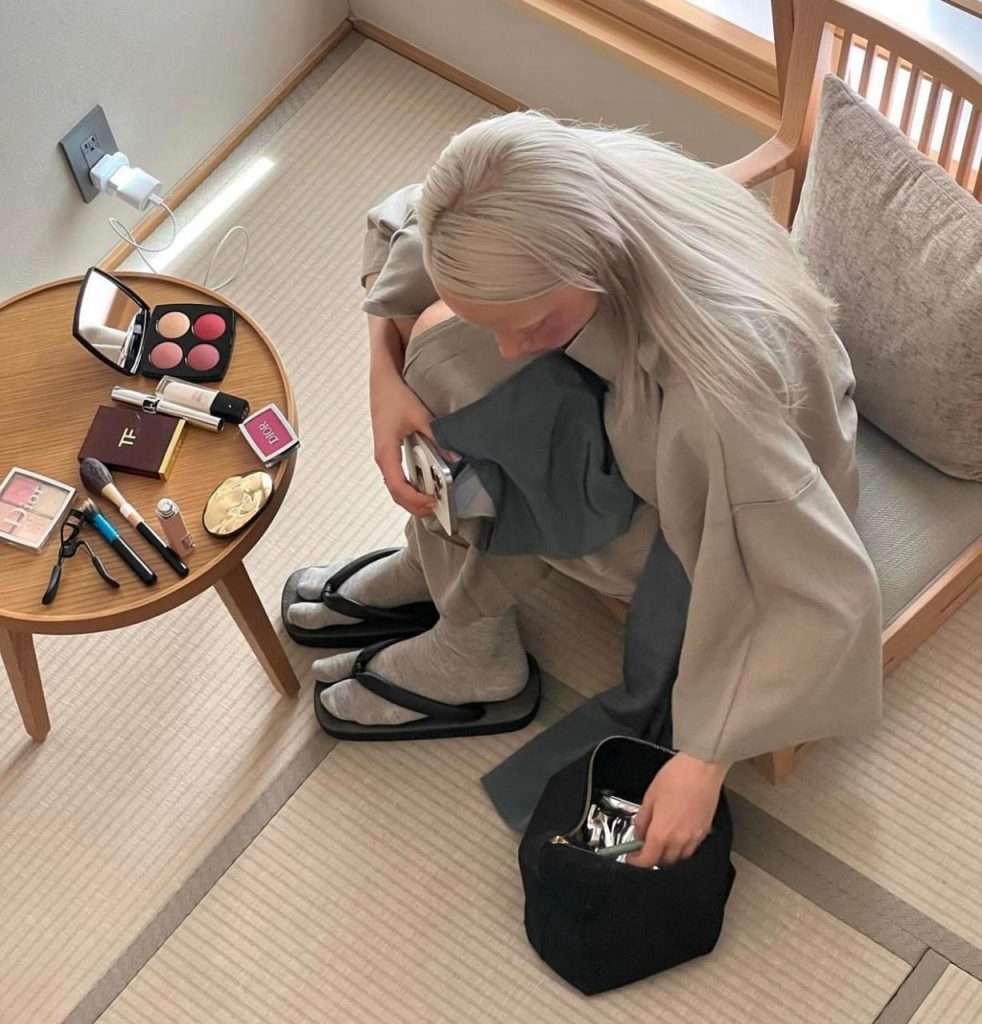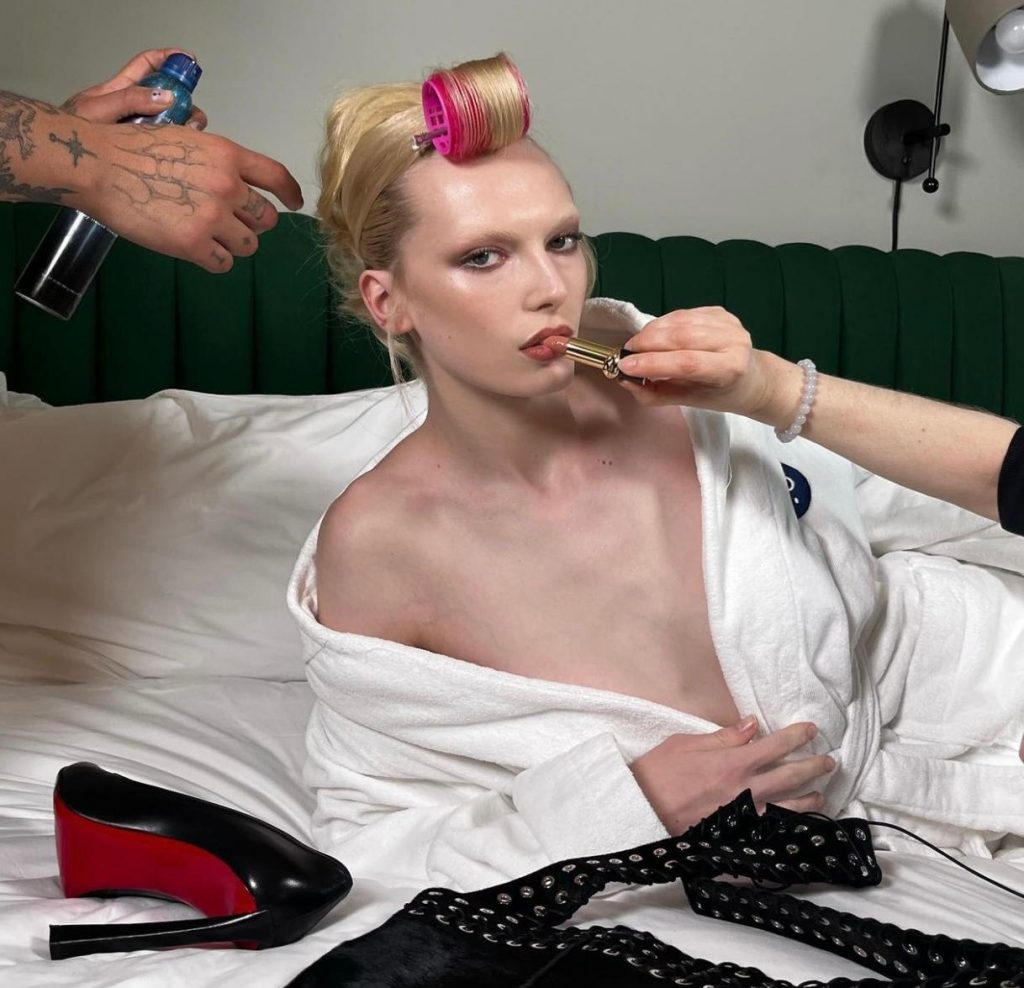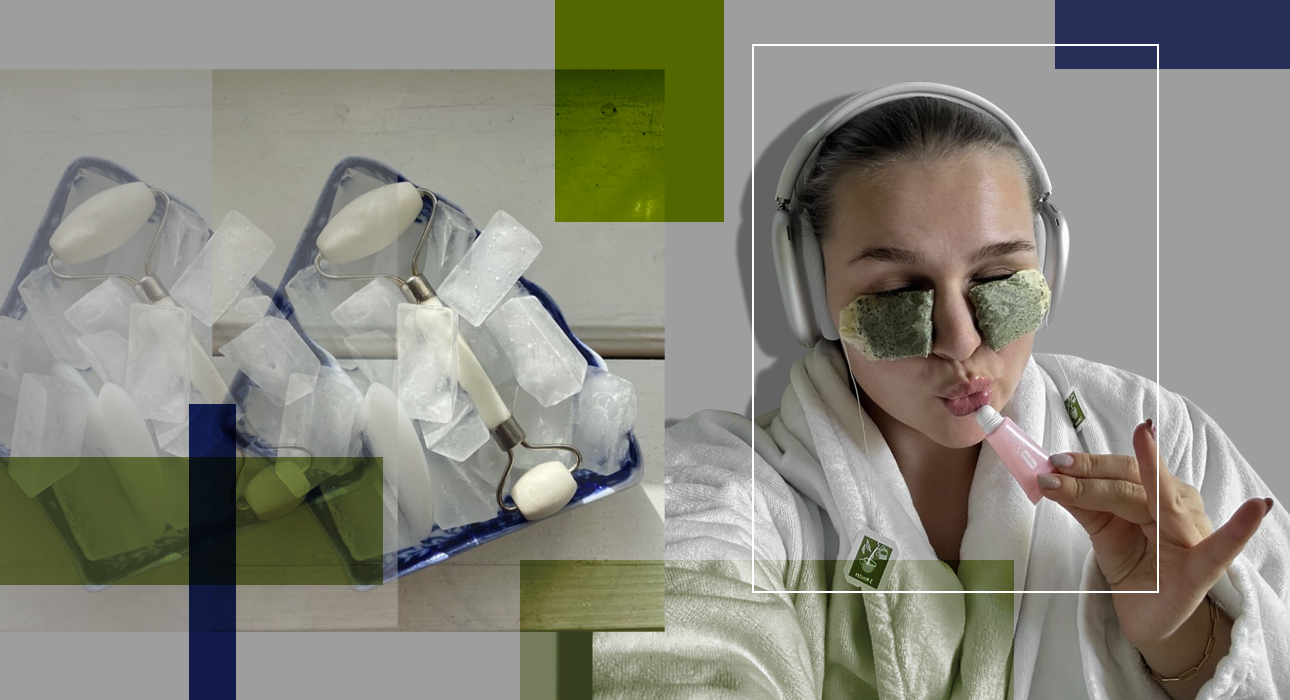Underconsumption Core translated from English means “underconsumption”. It’s a movement that’s emerging as a counterbalance to zoomers and other microtrends popular among millennials that occasionally go viral on TikTok.
The gist of the trend is this: avoiding impulsive purchases clothes, shoes, cosmetics and other items that social networks impose on us every day, in favor of conscious consumption.
When we looked at our beauty shelf, we realized that it was just waiting for the underconsumption trend. That’s why today we’ll tell you how to follow it and why you still don’t need a ton of cosmetics.
What is the Underconsumption Core?
The Underconsumption Core is a growing movement promoting conscious consumption. Its main idea is to buy less but better quality and not focus on trends when choosing. For example, instead of buying the now-fashionable choppers that everyone will forget about next season, stick to classic leather Chelsea boots that will last a long time.
Prerequisites for the emergence of a trend:
— Financial. In a world where everything (from real estate to food) is rapidly becoming expensive, zoom enthusiasts are having to rethink their spending. This is the generation that stays with their parents longer because they cannot rent their own home and cannot afford many things that are considered basic for millennials. At the same time, the low income of zoomers cannot be attributed to laziness. Unemployment rates are falling around the world, but high prices and inflation are holding Generation Z back in many ways.
— Environmental. Being environmentally friendly is now a core value for many young people. Considering climate change and environmental problems that are difficult to ignore, reducing waste and minimizing consumption is not only a trend but also a necessity.
— Emotional. The psychological burden of “too much” is real. A cluttered space can lead to a cluttered mind. That’s why so many people find peace in simplicity; less confusion, less stress, more clarity.
Incomplete Consumption Basis: sustainability, quality and conscious decisions. For this reason, his followers prefer to find new owners for unnecessary clothes and shoes rather than getting rid of them. The same rules can be safely applied to cosmetics.
How should the Less Consumption Principle be followed when choosing cosmetics?
Here are some tips to help you follow the Low Consumption Core, at least from a beauty perspective.
Tip 1: Don’t start a new product without finishing the previous one.
When a shelf in the bathroom turns into a display case, this is already an association. A simple rule helps in this case: use the product until it wins, and only then switch to a new one (if we are talking about skin care cosmetics). Your skin will thank you for it because it won’t have to adapt to an ever-changing beauty routine. You may not think this is as exciting as choosing a new serum from the market, but throwing away an empty(!) tube of cream is quite fun.
Tip number 2. Go through all your cosmetics.

This will help you understand how often you use certain tools and how little you actually need to meet your basic needs. Put aside cosmetics that you almost never use, and think about who might need them if they have expiration dates and are good left over (your mother or friend, for example). If your cosmetics have expired, it is best to say goodbye to them (by the way, we wrote how to understand this here). If the remainder is minimal, you can always find a new use for the product.
Tip 3: Find new uses for your money
If cosmetics don’t suit you, you can almost always find other uses. For example, a very dark eyebrow pencil can be used as eyeliner. A face cream with a very thick texture can also be turned into a body lotion. You will find more life hacks on this topic in our material.
Tip #4: Pause Before Clicking “Add to Cart”

If, after viewing your feed on social networks, you have a burning desire to buy the same lip gloss that you saw from a blogger or a serum that will make your skin perfect and radiant, do not rush to add it to your cart. in the market place. I assure you that within a week or two you will forget why you even wanted this product. The truth is that marketing plays on emotions, so we make impulsive purchases. When emotions subside and you soberly evaluate whether you really need this thing, most often the answer is negative.
Tip #5: Don’t trust the internet
All information on the Internet should be approached with caution. This is especially true for cosmetics reviews by bloggers and influencers. You can never say for sure how your skin will accept the cream that someone else will like. It is best to choose skin care products with a beautician and according to your skin needs, and not according to trends and recommendations on the Internet. It is also better to have 5 effective products in your makeup bag instead of 15 trendy ones.
Source: People Talk
I’m Roger Gritton, and I’ve been writing for the The Fashion Vibes for over 5 years now. My specialty is beauty news; I’m passionate about covering the latest trends, products, and innovations in the industry. In my time there, I’ve become known as an authority on all things beauty-related.
I love discovering new experts to interview, researching up-and-coming ingredients and techniques that are making their way onto our beauty shelves and highlighting people who are making a difference in the world of cosmetics. My work has appeared not only on The Fashion Vibes, but also several other publications including the New York Times Magazine, Allure Magazine and Refinery29.





